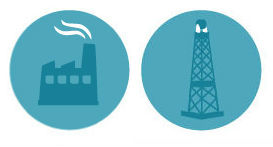Starting Energy Service in Washington DC

Since 1999, electricity and natural gas customers in Washington, D.C. have had a choice of who provides their electricity and natural gas supply. Are you moving to D.C.? Find out everything you need to know about your energy supply options in D.C. here!
Looking for Your Utility? Find the Pepco agency in D.C. closest to you
Why Deregulation?
Deregulation of electricity and natural gas markets in Washington D.C. was part of a regional trend of energy market restructuring that took place during the late 1990s/2000s. Along with D.C., neighboring states also opened their markets to competition at the same time, including Maryland, Virginia, Pennsylvania, Delaware, New Jersey, and New York. At the time it was anticipated that the competitive model for electricity and gas might be imposed nationally by Congress, and so the state of D.C. acted proactively in order to ensure deregulation happened in a way that was appropriate to the state. Greater consumer choice was also expected to bring lower energy prices for residential customers.
What Deregulation Means for You
Deregulation of D.C. electricity and natural gas markets means that you have a choice of energy supplier. This means:
- Greater choice of energy supplier
- Wider price options - choose a floating price, lock in a fixed price, or choose green energy
- Competition among suppliers, leading to lower prices and better customer service
Learn more about energy market deregulation across the country
What has not changed with deregulation is the operation of energy infrastructure. PEPCO, the local utility, still owns, operates, and maintains distribution network for electricity, and the gas distribution network is run by Washington Gas & Light Company. The energy you receive will be the same, regardless of who supplies it. The same thing goes for interruptions or the quality of the electricity and/or gas you receive - in short, nothing changes but the price when you switch suppliers!
Choosing a Competitive Retail Energy Supplier in D.C.
Greater choice and wider energy options can make shopping for energy overwhelming at first. Here are some tips to help you get started:
Prices
Deregulation has brought you choice not only in who supplies your electricity, but also what kind of price you pay for it. If you purchase electricity from your utility, you are paying a variable rate known as the "Price to Compare". This rate changes every month, and is based on the utility's costs of procuring supply. This rate for natural gas is called the "Standard Choice Offer"
However, if you choose to purchase your electricity from a competitive energy retail, you have the option of locking in a fixed price. In general, we recommend choosing a fixed price for your electricity if you have the option - find out why.
Competitive Retail Energy Suppliers in D.C.
Whether you're shopping for electricity or gas, it's a good idea to check out the offers of at least four or five retail suppliers before narrowing down. We also recommend checking out what current customers are saying about retail providers in your area.
Contract Terms and Conditions
There are a few things you should look out for when you're reading the terms of your electricity or natural gas contract:
Early Cancellation Fees?
Also known as "early exit fees" or "termination fees", this is a charge for leaving your (usually fixed price) contract before the end of its term.
Automatic Service Renewal
You should always check what your chosen retail energy supplier's policy is for when your contract comes to an end. Some suppliers will automatically switch you back to the utility, while others will automatically renew you.
One-Time Charges
It's a good idea to check out how much of a late payment fee your chosen supplier charges, though you should always contact them to see if you can make a special payment arrangement if you cannot pay your bill on time.
Dispute Resolution/Communication
It's a good idea to be aware of the various ways that you can get in touch with your energy supplier, as a general rule.
Find Out More Check out some of our guides to purchasing energy in the US:
Common energy contract terms and conditions
10 questions to ask your supplier
Additional rewards
While rewards such as free thermostats or air miles should never be your first reason for choosing an energy supplier, they don't hurt either! Competitive energy suppliers often partner with other companies to offer you additional benefits and rewards, which is something that your utility can't do.
Understand Your Energy Bills in D.C.
Both your electricity and natural gas bills can be broken down into three main types of charges:
- Charges related to your energy supply: covers the cost of the electricity you have consumed over the previous month.
- Charges to cover the costs of transportation: for electricity, this covers the costs of transmission and distribution along high- and low-voltage wires; for natural gas, this refers to the costs of pipeline transportation and storage
- Taxes and state surcharges: these may be flat sums, or variable (based on how much ils you have consumed in a month)
How Your Energy Service Works in D.C.
Electricity and gas services in D.C. work in similar ways, and the process of delivering energy to your home can be broken down into four main steps:
1. Generation/Exploitation

The first step of the process of bringing energy in your home is to generate it (in the case of electricity) or to get it out of the ground (for natural gas).
Most electricity in D.C. is generated from nuclear and natural gas. D.C. has adopted a renewable portfolio standard requiring Renewable resources make up about 2% of D.C.'s electricity mix.
Natural gas is sourced from the state of D.C. and surrounding states.
2. Transmission

Transmission is the next step in bringing energy to your home. For electricity, this means sending power from the generating plants along high-voltage transmission lines to local distribution networks. For natural gas this step refers to its transportation in pipelines (often overground, at high pressures) to the local distribution network.
3. Distribution

The third step in the process is local distribution from the local distribution network to your home. For electricity, at this stage power is transformed into a lower voltage at the distribution network and travels along local wires to your home. For gas, this is the stage where gas travels in underground pipelines in your community until it reaches your home.
4. Consumption

The final stage of this process is when energy reaches your home. You are billed for your energy supply by either your utility or your chosen retail provider.
Got a question about your power supply in D.C.? Give us a call at 1 (832) 460-0233 to find out your best options